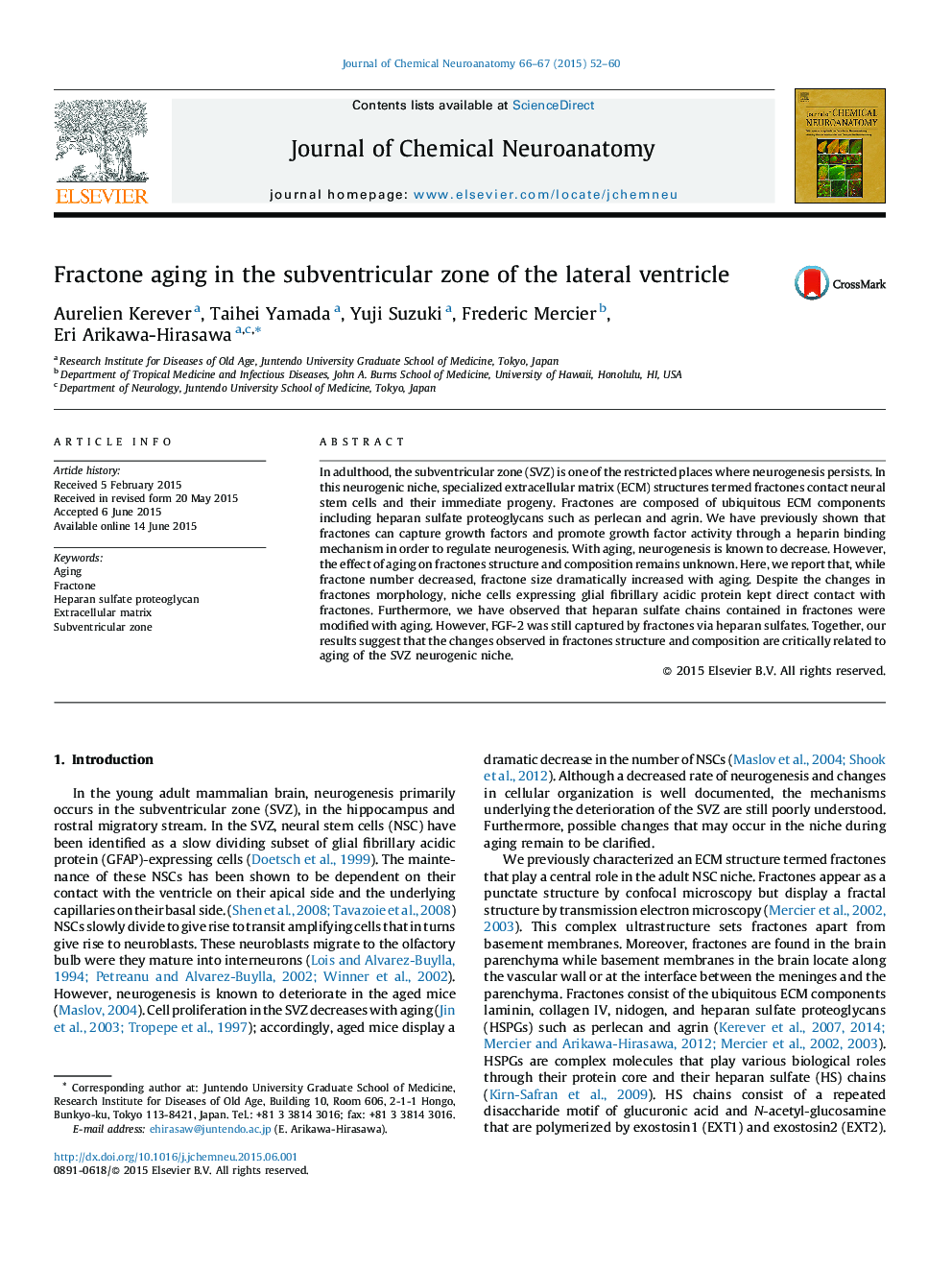| Article ID | Journal | Published Year | Pages | File Type |
|---|---|---|---|---|
| 1988806 | Journal of Chemical Neuroanatomy | 2015 | 9 Pages |
•We reported the effect of aging on the morphology of fractones, an extracellular matrix structure that acts as a niche for neural stem cells in the subventricular zone (SVZ), the primary neurogenic zone in adulthood.•We have found that fractone size was increased with aging, and was accompanied by a modification of the fine composition of heparin sulfate chains contained in fractones. These results may indicate an interplay between the niche cells and fractones, which may result in the loss of neurogenesis during aging.
In adulthood, the subventricular zone (SVZ) is one of the restricted places where neurogenesis persists. In this neurogenic niche, specialized extracellular matrix (ECM) structures termed fractones contact neural stem cells and their immediate progeny. Fractones are composed of ubiquitous ECM components including heparan sulfate proteoglycans such as perlecan and agrin. We have previously shown that fractones can capture growth factors and promote growth factor activity through a heparin binding mechanism in order to regulate neurogenesis. With aging, neurogenesis is known to decrease. However, the effect of aging on fractones structure and composition remains unknown. Here, we report that, while fractone number decreased, fractone size dramatically increased with aging. Despite the changes in fractones morphology, niche cells expressing glial fibrillary acidic protein kept direct contact with fractones. Furthermore, we have observed that heparan sulfate chains contained in fractones were modified with aging. However, FGF-2 was still captured by fractones via heparan sulfates. Together, our results suggest that the changes observed in fractones structure and composition are critically related to aging of the SVZ neurogenic niche.
